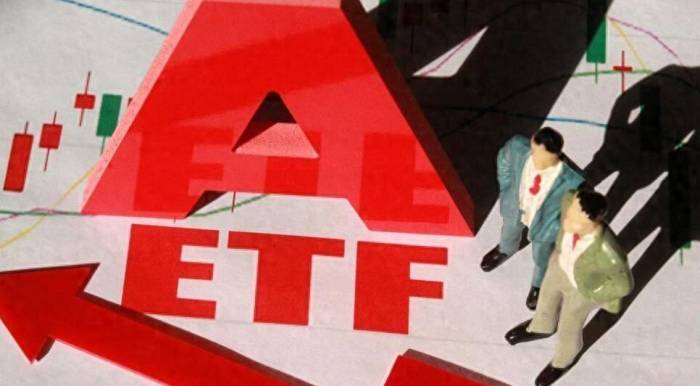The A-share market has never been short of dramatic twists and turns.
Today, a thrilling "2700-point defense battle" unfolded, with a sudden late surge and a massive influx of funds that made many investors' hearts race.
Is this the power of "protecting the market" or another trap of "luring more buyers"?
In the morning, the A-share market continued the "prosperous" momentum of the previous two days, with the three major indices opening slightly higher.
However, the good times didn't last long as market enthusiasm gradually waned, and the indices began to fluctuate downwards, with the 2700-point threshold hanging by a thread.
In the afternoon, the market was filled with a strong sense of caution, and trading volumes noticeably shrank, as if in the calm before a storm.
Just when investors thought that the A-shares would close with a "green disk" today, the situation changed dramatically at the end of the day.
The heavyweight sectors represented by banks and securities suddenly exerted force, lifting strongly and driving the CSI 300 index to rise rapidly, reversing the decline.
The trading volume of the CSI 300 ETF surged dramatically, setting a new high in two months, indicating that "large funds" are actively entering the market.
Advertisement
This sudden "end-of-day surge" caught many investors off guard, with some cheering and believing that the horn of the "bull market" has sounded; others are cautiously watching, worried that this is just a fleeting "trap" of "luring more buyers."
So, where does this "mysterious force" come from, and what is their goal?
One view suggests that it might be the "national team" stepping in to "protect the market."
Recently, the A-share market has been in a slump, with insufficient investor confidence and market liquidity.
To stabilize market sentiment, the "national team" chose to act at a critical moment to boost market confidence.
Another view is that this might be some institutional investors conducting "self-rescue."
Recently, the A-share market has been continuously adjusting, with many institutional investors suffering heavy losses.
To "recover losses," they chose to "self-rescue" when the market is low, lifting the index and creating the illusion of a "rebound" to facilitate "selling at high positions."
Some also believe that this might be foreign capital "bottom-fishing" in A-shares.
Recently, the RMB exchange rate has been continuously appreciating, and the valuation of the A-share market is at a historical low, making it a good time for foreign capital to "bottom-fish" in A-shares.
Regardless, this "end-of-day surge" has brought new variables to the A-share market.
Is it the starting point of a "bull market" or the "last gasp" of a "bear market"?
Perhaps time will give us the answer.
You recognize that the market is like a chess game, with every move hiding subtleties.
Instead of obsessing over the identity of the "behind-the-scenes manipulator," it is better to calmly analyze the current market fundamentals and policy aspects to better grasp investment opportunities.
What we need to make clear is that the A-share market has been rising for three consecutive days, which is not easy under the recent sluggish market performance.
This at least shows that there is a certain support force around 2700 points, and the market sentiment has also improved to some extent.

Relying solely on the power of "protective funds" cannot drive the A-share market out of the "bear market."
What truly determines the trend of the A-share market is the profitability of listed companies, the operation of the macroeconomy, and the support strength of the policy side.
From the current point of view, the fundamentals of the A-share market are not optimistic.
Affected by multiple factors such as the pandemic and geopolitical issues, the domestic economic downward pressure remains large, corporate profit growth slows down, and market confidence is insufficient.
Although the policy side has recently released some positive signals, such as the central bank's interest rate cut and increased investment in infrastructure, the effects of these policies still need time to manifest.
Therefore, for the future trend of the A-share market, we cannot be too optimistic or too pessimistic.
In the short term, the A-share market may continue to maintain a pattern of fluctuation and consolidation, with 2700 points becoming the focus of contention between bulls and bears.
However, in the medium to long term, the A-share market still has investment value.
With the transformation and upgrading of China's economy and the continuous improvement of the capital market, the long-term positive trend of the A-share market will not change.
For investors, the most important thing now is to remain calm and not be swayed by the short-term fluctuations of the market.
Adhering to the concept of value investment and choosing companies with good performance and reasonable valuation for investment is the way to stand invincible in future market competition.
Looking back at today's market performance, the "surge" at the end of the day is indeed worth paying attention to, but more importantly, it is necessary to see that the market trading volume is still low, and the sentiment of investors is cautious.
This indicates that the market still has disagreements about the future trend, and the signal of a "reversal" in the A-share market has not yet appeared.
For those short-term investors who "chase rises and kill falls," it is not yet a good time to "bottom-fish."
For those "value investors," it is now possible to start paying attention to those quality companies that have been "wrongly killed" by the market, in preparation for the future "bull market."
The A-share market is always full of opportunities and challenges.
Only those investors with professional knowledge, a calm mind, patience, and perseverance can ultimately gain recognition and rewards from the market.